Oldbury Power Station
MapIntroduction
The power station is now owned by Nuclear Restoration Services (previously, the Nuclear Decommissioning Authority, and before that, Magnox) and is in the process of being de-commissioned.
The site consists of a variety of habitats, and this is its attraction.
It is on the banks of the River Severn, with its enormous mudflats. Three old lagoons
are in various states of disuse. These lagoons were large settling tanks,
used during the dredging process for the tidal reservoir. The fine
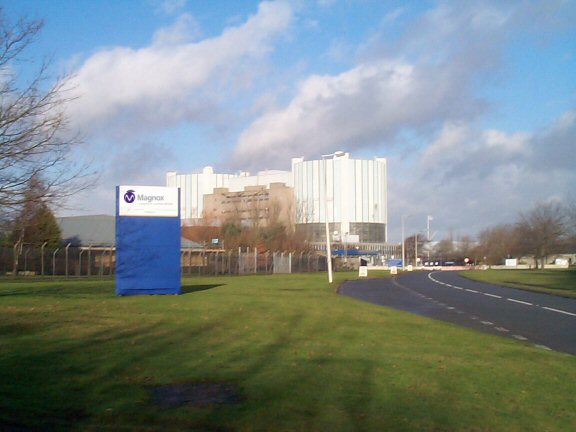
The power station entrance.
Access
General access is via public footpaths, which surround the power station.
The main route is the
Since the site has started to be de-commissioned (in 2012), public access is now allowed to all the Lagoons. (Historically, access to the lagoons was gained by writing requesting this and permission to visit requested at the Gate House.)
Description of Site
Lagoon 1 - This is the oldest settling tank (created in 1975), and is now
little more than a cow field, which floods in winter. However, the floods do
attract ducks, waders and gulls at high tide. They consist mainly of Lapwing, Curlew and Dunlin.
The numbers of Teal, Wigeon, Mallard and Shelduck depend on
the level of water in the lagoon. Also Herons and Little Egret roost. The birds are very susceptible to disturbance when it contains some water (in winter).
It can be viewed very well from viewing points - see Map of OPS. For instance, with caution it is
possible to view the lagoon from next to the outflow pipe platform near the
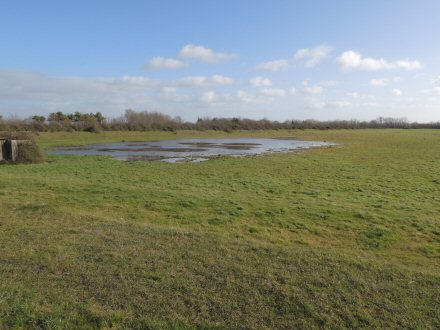
Flooded Lagoon 1 from Severn seawall (Feb 2020).
Lagoon 2 - This is also a disused settling tank (created in 1983). It is home to a scrubby habitat, with small woods developing, but still a small reedbed at its southern end. Reed Warblers, Reed Bunting and Whitethroat breed. Water Rail are present in winter when water remains in the reeds. Stonechat over-winter. Also, the surrounding hedges are attractive to passage warblers. Grasshopper Warblers have been present some years in the low scrub on the lagoon. Kestrels have bred, and hunt the grasslands. A wildlife pond just to the west of the lagoon is good for dragonflies. Migrant Clouded-Yellow butterflies can be seen around the lagoon or along the shore in autumn. There are many orchids in summer.
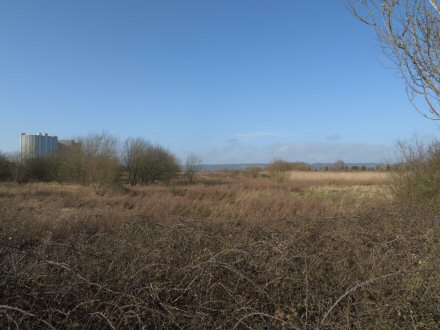
Lagoon 2 from southern end (Feb 2020).
Lagoon 3 - This is the settling tank which ceased to be used in 2016 (having been created in 1994). This lagoon has taken over from Lagoon 2 as the main site for Reed Warbler, Sedge Warbler and Reed Bunting. Stonechat over-winter and Whinchat can be seen on passage. The main reedbeds are at the SW and NE ends, but reeds/long grass cover most of the Lagoon. Scrub is now starting to take over, especially in the south corner. The SW side gives a good view over fields towards the yacht club. And there is a small copse here which attracts passage Warblers and the odd Flycatcher. The pylons around the site and blue reactor towers are always worth checking - for Peregrines, other raptors, and Ravens.
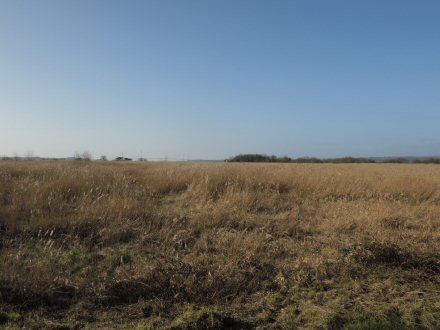
Lagoon 3 from S side (Feb 2020).
The lake to the East of Lagoon 3 (where the hide once stood) usually has Tufted Duck, Mallard, Moorhen and Coot; Canada Geese usually nest on the island and Mute Swan sometimes do.
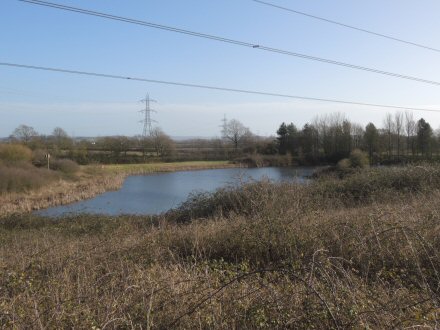
River
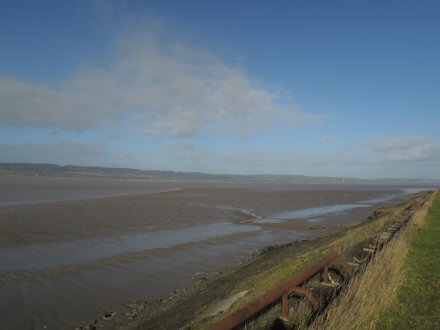
River
Nature Trail - The orchard, next to the car park, holds Fieldfares and Redwings in winter. The meadows are favoured by Green Woodpeckers, which breed on-site. There is a wildflower meadow next to the carpark, with a progression of : Cowslips (May), yellow Hawk's-beard (June) and Greater Knapweed (August). There are usually Bullfinches and tit flocks in the hedges, and increasingly Great Spotted Woodpeckers and Treecreepers as the woodlands mature around the site.
Copyright.
Last revised: 16 March 2022.